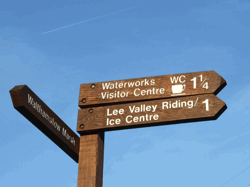 |
|
| Asbestos on Porter's Field |
Results of Asbestos Identification Lea Bridge Road, E10 7QL Report no : Client's reference number(s) : 4-RAIL Services (4RS) reference number(s) : Date sample(s) received : Date(s) of examination(s) : Issue date : Test Method 4RS-JB-R190312-Rev02 - 111514/160312/01 - 111514/160312/03 16th March 2012 19th march 2012 18th April 2012 Samples were examined in accordance with the methods described in the HSE Document HSG 248 Asbestos: The analysts' guide for sampling, analysis and clearance procedures and in-house test procedure 4R-E220. The results relate only to the items submitted for testing. Where samples have been taken by others, 4-RAIL Services do not accept any responsibility for the sampling. Samples examined will be retained by 4-RAIL Services for a period of 6 months, unless otherwise specified by the Client. Analysed by :............................ Mr. C. Isgrove, Laboratory Manager Certified by :.............................. Mr. J. Bailey, Consultant Additional comments The opinions and interpretations expressed herein are outside the scope of the UKAS Accreditation 4-RAIL Services Limited were requested by Mr. Kassim Annaz, Nussli (UK) Ltd to attend site and sample material suspected of containing asbestos from within the excavated soil / rubble material at Lea Bridge Road, E10 7QL. Sampling was undertaken during daylight hours on the 16th March 2012, by Mr. Scott Hagland of 4-Rail Services Ltd. Three samples were taken for analysis. All three samples were confirmed to contain Chrysotile Asbestos. Recommendations Given that the material identifed is a cement based product, and the asbestso fibres within it are locked in matrix, it is considered a low risk product, and as such work on this type of material is not considered licensible, under the Control of Asbesos Regulations (CAR) 2006. However the following precautions / procedures are advisable during the continuing excavatiing works and back filling operations. 1) All staff to be briefed as to the presence of small fragments of asbestos cement with the soil / rubble. Works should proceed with caution and due care, and if further larger sections, or ‘'hot spots'' are identified. Works within this specific area should cease, and removal of the said hot spot be under taken under controlled conditions. 2) Given that the works are being undertaken outside, this in itself acts as an additional control measure, with any dust created, being taken away and diluted in the ambient atmosphere. If dust levels do obviously increase on a still day for example, spraying down with water would be good practice to suppress any dust created. 3) If direct activities are to be undertaken by operatives on site with the rubble / soil. E.g. shovelling which involves direct contact with the soil where obvious cement fragments are present, disposable respirators (FFP3) would be considered good practice. 4) If any of the soil is to be taken off site and land filled, further testing maybe required, to ascertain whether the soil is deemed contaminated with asbestos. I.e. Asbestos is present at greater than 0.1% of the weight of the soil present. This is unlikely given the evidence observed on site. 5) Finally the onsite method statement / risk assessment should be amended, to reflect the presence of small fragments of asbestos cement present; and document the procedures and control measures outlined in 1 - 4 above. (March 16, 2012) |